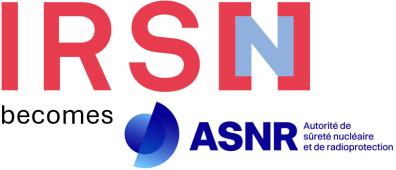Result of a H2020 Euratom call for projects: A success for IRSN and research in nuclear safety and radiation protection
The European Commission (EC) has just announced the results of the first call for projects of the Horizon 2020 programme (the 8th Euratom Framework Programme for Research and Technological Development), for research and training activities in nuclear fission and radiation protection. IRSN participates in 11 projects out of the 14 selected in the topics relevant to the Institute (8 topics out of 16 in the call for projects).
This result reflects IRSN dynamism in the proposals made for Horizon 2020 and its contribution to collective action for research at the European level. Of these 11 projects, 3 are intended to structure European research in their field in a sustainable manner. For 2 other projects, IRSN led the construction of a collective response around a core of key competencies corresponding to the major issues of safety.
IRSN sees these results as a double recognition: it both acknowledges the place given to safety and radiation protection issues in a growing share of the selected projects, and recognizes IRSN involvement in structuring research activities in nuclear energy and radiation protection at European level.
This involvement is part of a fundamental shift in European R&D structuring, which aims to establish cooperation between all the actors in a field, to define a common and consistent vision, structure priorities and coordinate programs within European thematic platforms [1] such as the European associations MELODI, which studies the effects of low radiation doses, or NUGENIA in the field of pressurized water nuclear power reactors. These platforms’ production includes Strategic Research Agendas helping to structure optimally successive calls for projects. IRSN has been committed for years in these platforms where it specifically addresses the scientific issues for safety and radiation protection.
Note:
- Research platforms are associative structures, involving stakeholders - research institutions, industry, universities – in a given field of research. They aim to define a common and consistent vision, structure R&D priorities, coordinate programmes and calls for projects, and gradually set up a joint programming.
The 11 projects involving IRSN
Three projects which intend to sustainably structure European research in their field
- Concert (European Joint Programme for the Integration of Radiation Protection Research), on the governance of radiation protection; it aims to sustainably integrate national and European research projects in a European joint programming in radiation protection. IRSN is one of the organizations designated by the French authorities, alongside the National Research Agency (ANR) and the CEA, as project manager for France.
Project presentation - Sitex 2 (Sustainable network for independent technical expertise of radioactive waste disposal – interactions and implementation), led by IRSN and following the Sitex project (2012-2013) on the management of nuclear waste; it develops a network of expertise to establish safety organizations’ joint priorities in the field of deep geological disposal of radioactive waste.
Project presentation - Joprad (Towards a joint programming on geological disposal for high activity long lived radioactive waste), also on the management of nuclear waste; the aim of this project is to prepare the setting up of a joint programming on radioactive waste geological disposal to coordinate research at the European level.
Project presentation
Two projects for which IRSN led the construction of a collective response around a core of key competencies corresponding to the major issues of safety
- IVMR (In vessel melt retention), on power reactors safety; the project objective is an analysis of the feasibility and technical limits of In-Vessel Melt Retention (IVMR) as a safety strategy to manage severe accidents with core meltdown.
Project presentation - Fastnet (Tool for the fast and reliable prediction of severe accident progression and anticipation of the source term of a nuclear accident), in the field of emergency preparedness and response management; at the crossroads of safety and radiation protection, the project aims to develop analytical tools in emergency preparedness, response management and drills, especially software for the rapid assessment of source terms for all types of severe accidents on European PWRs.
Project presentation
Six other projects
- Soteria (Safe long term operation of light water reactors). Project presentation
- Sesame (Safety assessment of thermal hydraulics in metal cooled). Project presentation
- Incefa Plus (Covering gaps in fatigue assessment light water reactor environments). Project presentation
- Samofar (Reactor safety of molten salt fast reactor). Project presentation
- Modern2020 (Development and demonstration of monitoring strategies and technologies for geological disposal). Project presentation
- Cebama (Cement-based materials for geological disposal). Project presentation
